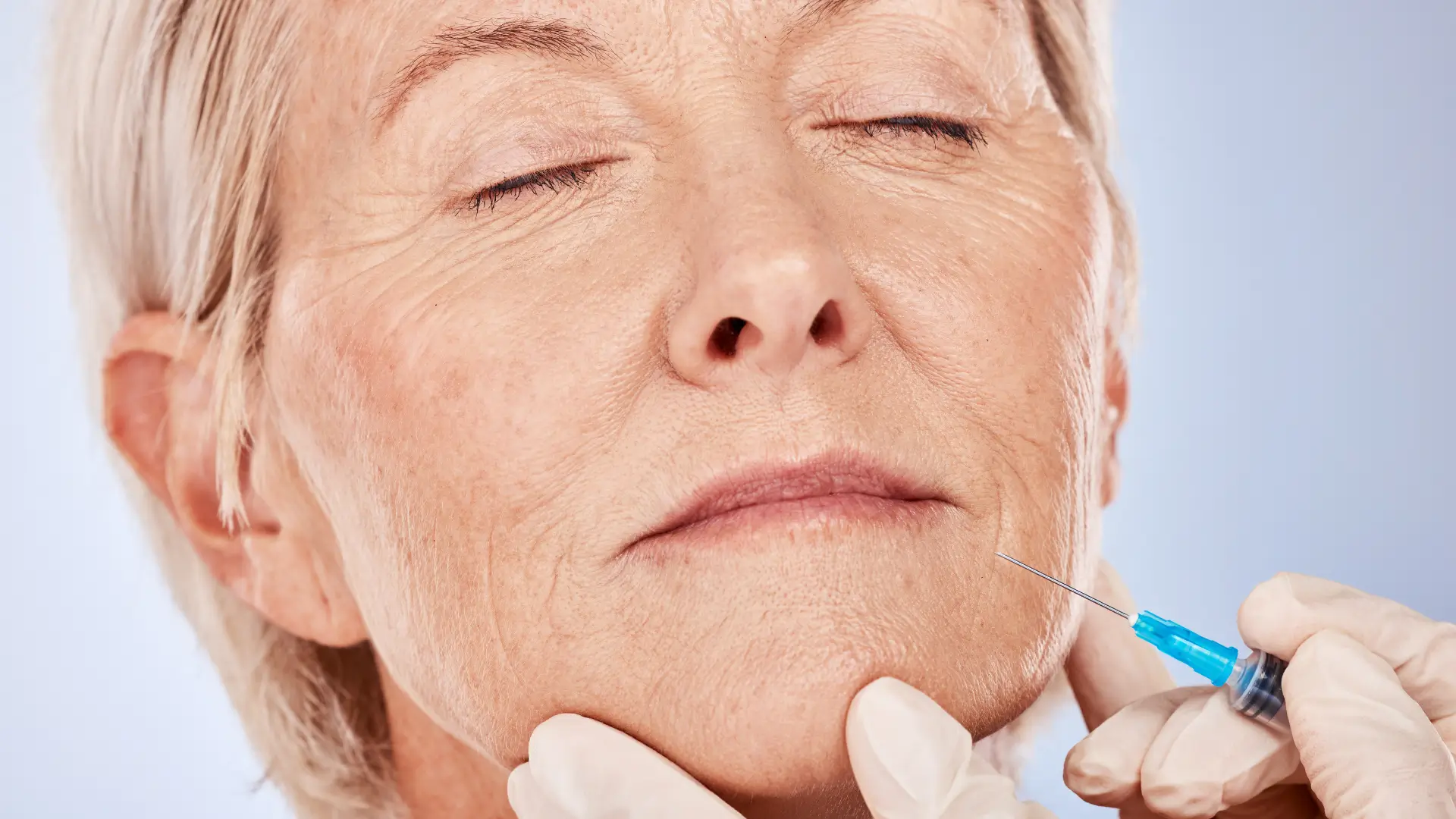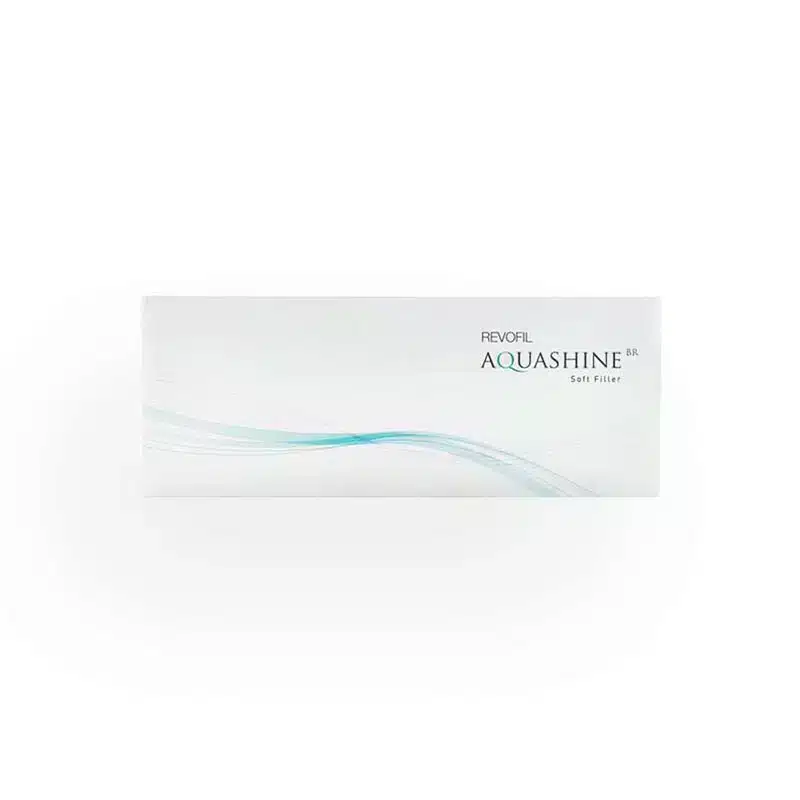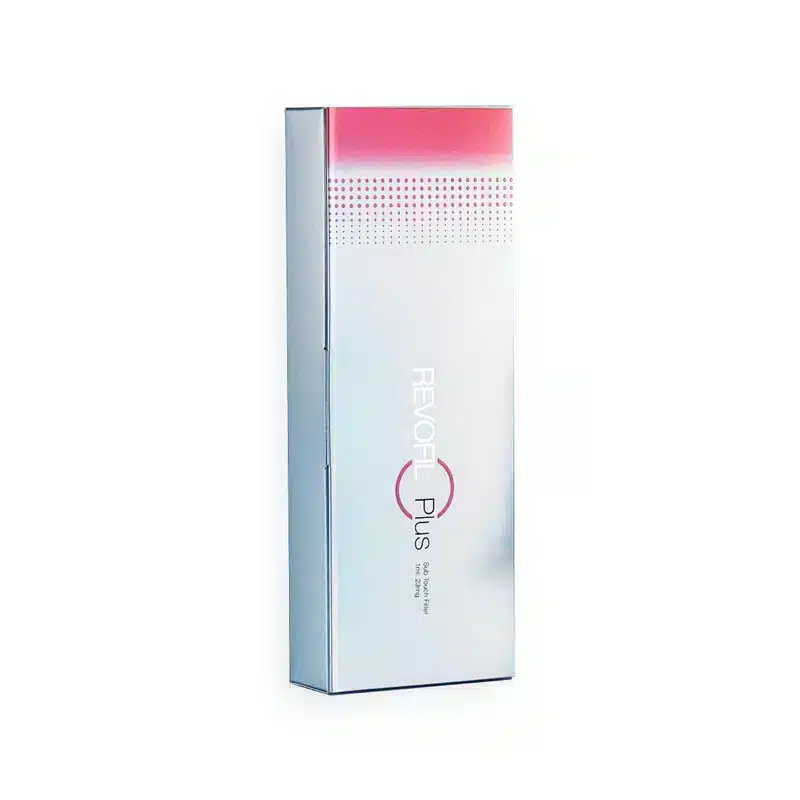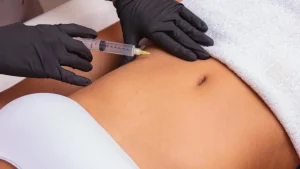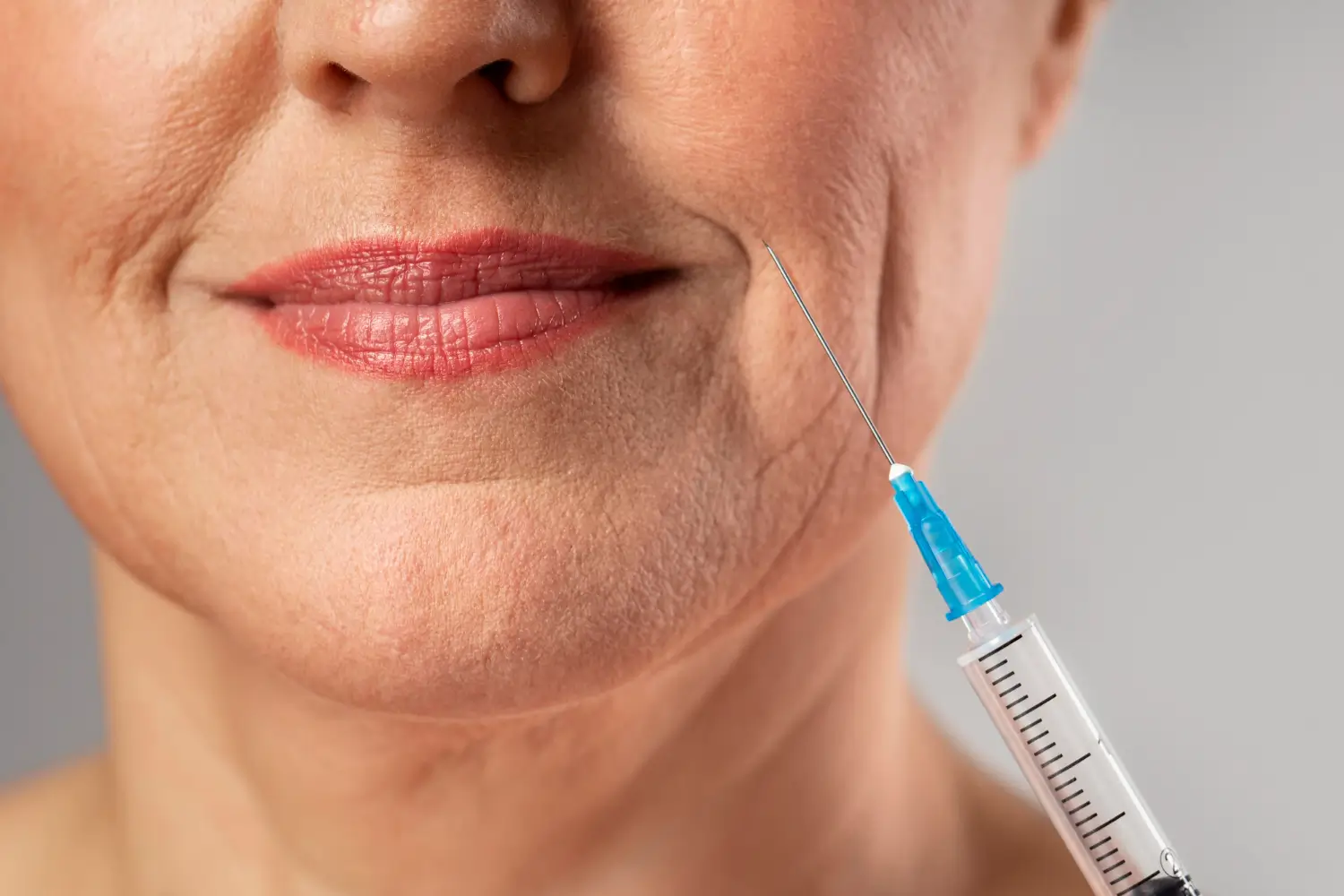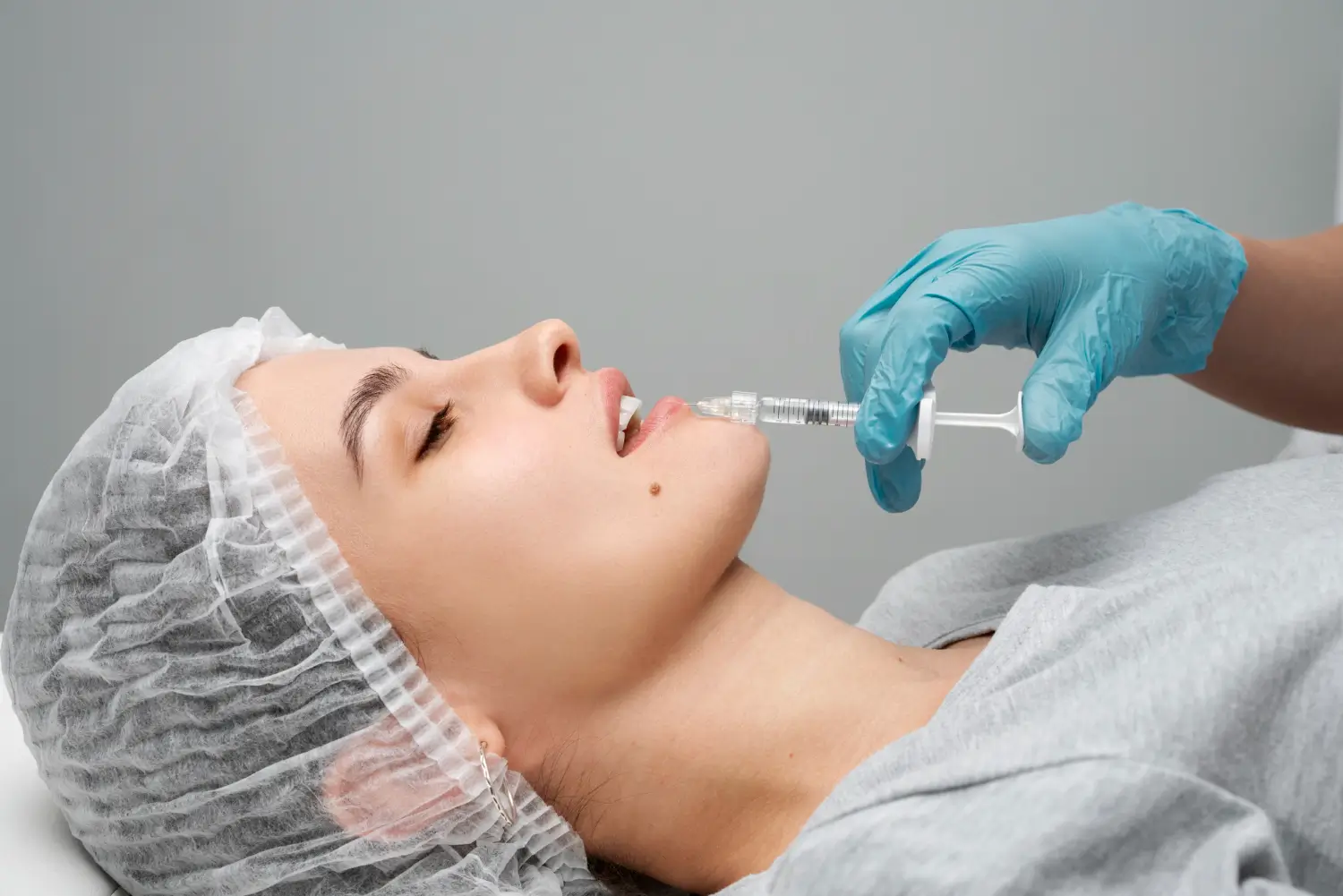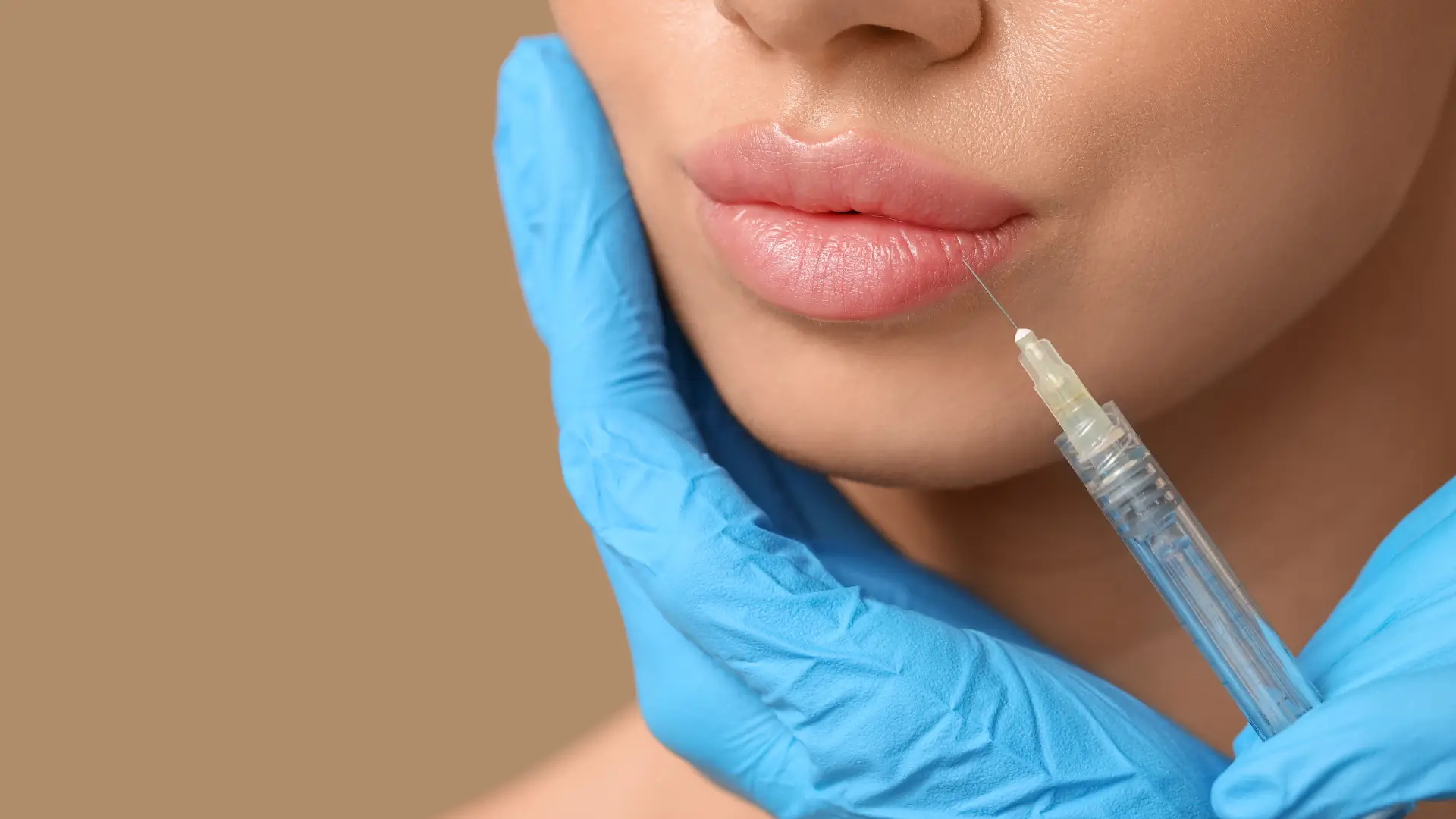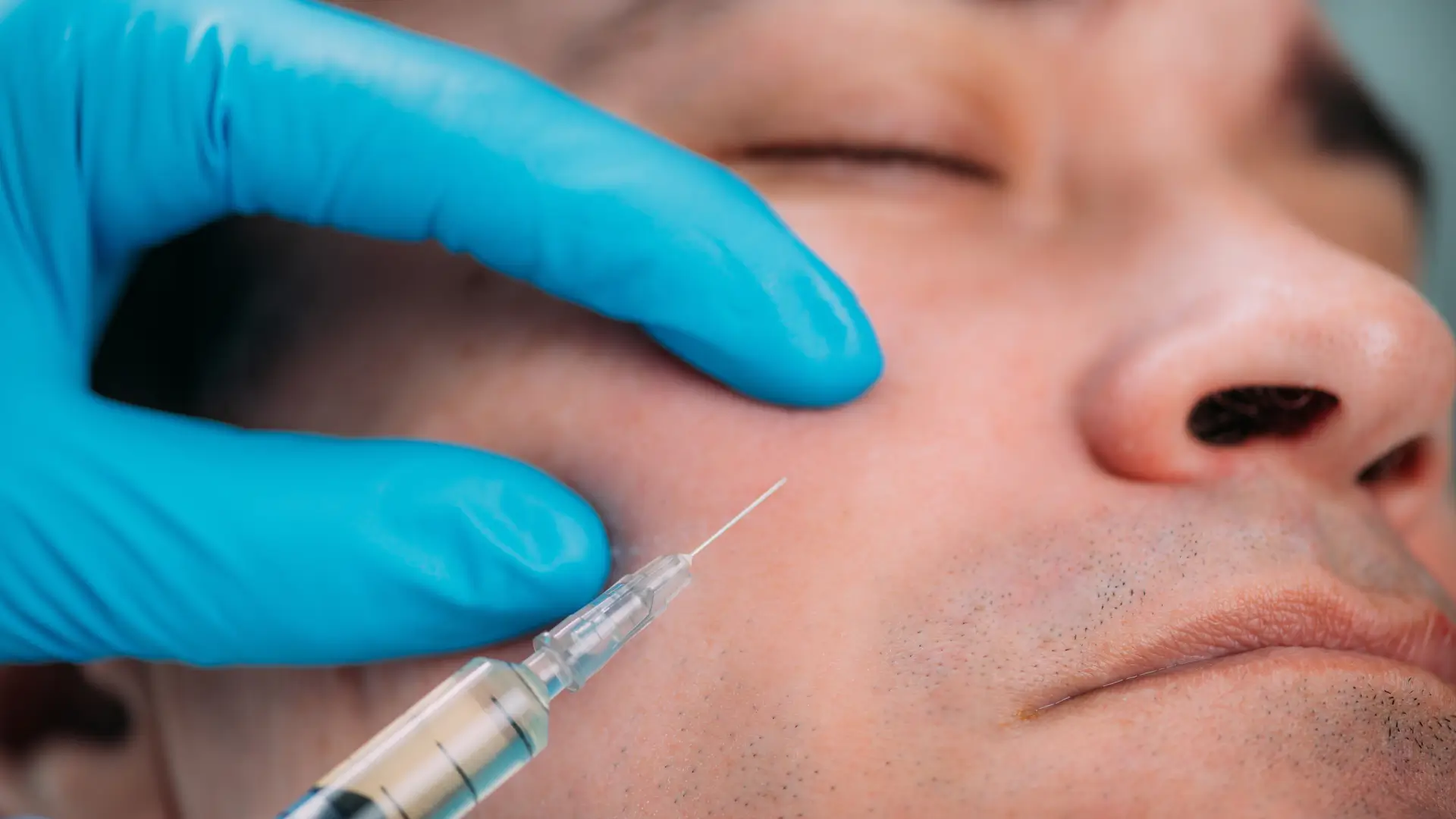In 2018, skin experts conducted an observational study that found patients pursue cosmetic procedures to achieve psychological goals, enhance attractiveness, and improve life quality. The study highlighted the motivations behind individuals’ choices to undergo minimally invasive treatments to achieve their desired appearance.
Minimally invasive procedures offer quick and effective solutions for skin concerns. Hyaluronic acid fillers like Revofil and Juvederm are excellent for facial rejuvenation. These treatments utilize their unique formulations to help restore youthful radiance and address various skin issues.
In this article, we’ll compare Revofil vs Juvederm, exploring their compositions, treatment indications, longevity, and key pros and cons to help you make an informed choice.
Key Takeaways
- Revofil filler employs advanced biomimetic peptide technology and cross-linked hyaluronic acid, resulting in biphasic and monophasic physical characteristics.
- Juvederm uses Vycross Technology in its injectables, cross-linking hyaluronic acid molecules to form a specialized, smooth gel filler.
- Both hyaluronic acid-based dermal fillers provide a range of injectables, highlighting their versatility in addressing various facial skin concerns.
- Revofil treatments usually last between 9 to 12 months, while Juvederm’s effects typically range from 6 to 18 months.
About: Medica Depot is your trusted all-in-one supplier, offering a range of high-quality medical injectables and supplies. Buy Revofil wholesale at Medica Depot today! Whether for health professionals, plastic surgeons, dermatologists, licensed estheticians, or other specialists, we can offer genuine, brand-name products you may need. With Medica Depot, we prioritize serving you better to improve the patient’s quality of life.
Understanding Revofil and Juvederm
Dermal fillers have become increasingly popular for non-surgical facial rejuvenation, valued for their safety and effectiveness. While not all brands are FDA-approved globally, many undergo rigorous testing to ensure quality and efficacy.
Revofil, a South Korean brand, offers a new generation of hyaluronic acid (HA) dermal fillers designed for revitalizing facial aesthetics. Though not yet FDA-approved, Revofil fillers are known for their advanced biomimetic peptide technology, which enhances gel viscosity and elasticity. This technology combines monophasic and biphasic characteristics, ensuring smoother application and long-lasting results.
On the other hand, Juvederm is FDA-approved, making it a trusted choice for practitioners and patients in the United States. Juvederm’s HA fillers utilize Vycross Technology. This unique cross-linking process creates a smooth gel formulation. This innovative approach allows Juvederm fillers to effectively restore volume, smooth fine lines, and enhance facial contours, delivering natural-looking and durable results.
Treatment Areas and Longevity
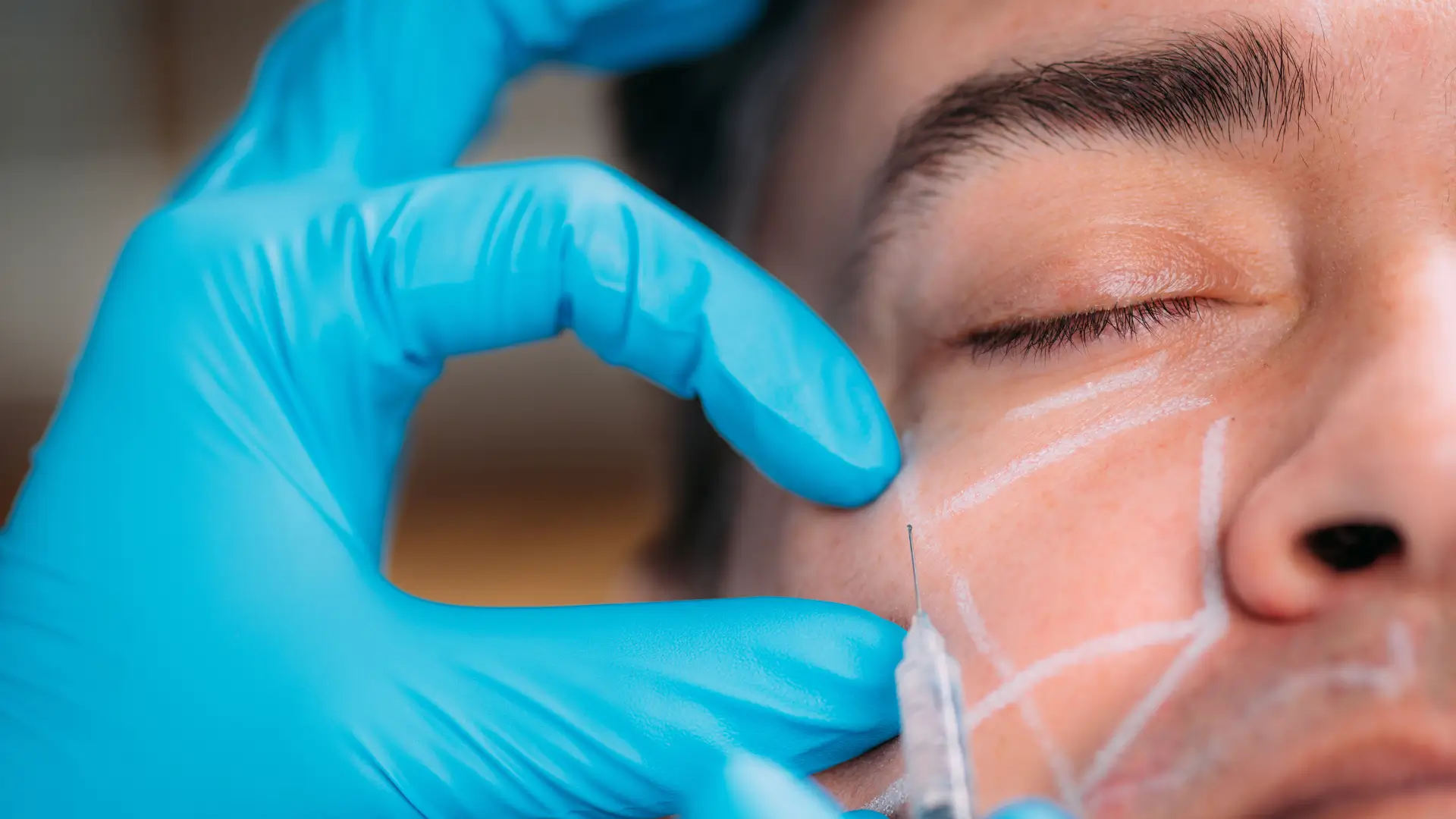
When comparing Revofil vs Juvederm, both hyaluronic acid-based dermal fillers offer a collection of injectables to emphasize their versatility in treating various facial skin concerns. Revofil is perfect for rejuvenating aged skin and is expertly crafted for face and tissue remodeling. Its three fillers have specific indications.
- Fine: Treatment includes correcting superficial wrinkles, fine lines, and caved scars. It also involves filling moderately pronounced facial wrinkles and tissue.
- Plus: Smooth deep wrinkles and lines while harmonizing volume and lip contour.
- Ultra: This treatment enhances facial contours, corrects deep wrinkles in thick skin, and adds volume to the cheeks, chin, and temples.
Meanwhile, Juvederm has six hyaluronic acid-based dermal fillers with different treatment areas and indications. Understanding these can help aesthetic professionals determine the most suitable product for their patient’s concerns.
- Voluma XC: Correction of aging skin volume loss, creating shape and contour for the cheeks and the chin.
- Volux XC: Enhance moderate to severe loss of jawline definition, adding volume to improve the shape and structure of the lower facial area.
- Vollure XC: Treat moderate to severe facial wrinkles and folds, reducing laugh lines around the nose and mouth and marionette lines from the corners of the mouth to the chin.
- Ultra XC: It provides the necessary volume for lip augmentation and addresses facial aging signs.
- Ultra Plus XC: This product smooths moderate to severe facial wrinkles and folds, like nasolabial folds, and enhances facial volume.
- Volbella XC: Enhances lip volume, corrects perioral lines around the mouth, and adds volume to the undereye area to reduce the appearance of hollows.
Longevity of Results
Both injectables can offer longer-lasting results, especially when administered appropriately by qualified aesthetic professionals.
- Revofil: The effects generally last 9 to 12 months. The duration can vary depending on factors such as skin type, age, and lifestyle.
- Juvederm: It typically lasts 6 to 18 months, varying with the specific product and treatment area. The patient’s metabolism, skin condition, and the amount of filler used can influence the duration.
Patients should undergo regular maintenance treatments to sustain the desired results for Revofil and Juvederm. Follow-up visits to providers help monitor when touch-ups are needed to maintain optimal outcomes.
Pros and Cons
Revofil has several benefits, such as its unique blend of biomimetic peptides and hyaluronic acid, which improves skin elasticity and firmness. It delivers natural-looking results and is effective for facial contouring and volumizing. Moreover, Revofil’s effects are long-lasting, usually up to 12 months, minimizing the need for frequent touch-ups.
While Revofil offers many benefits, it also has disadvantages, including the lack of FDA approval. Temporary Revofil side effects like redness, swelling, and bruising at the injection site may occur.
Juvederm is recognized for its smooth consistency and natural results. It is versatile, suitable for various facial areas, and provides immediate skin improvement. Its hyaluronic acid composition helps retain moisture, enhancing skin hydration and elasticity. Depending on the product used, the effects can last 6 to 18 months.
Juvederm treatments have some drawbacks. Common side effects include temporary redness, swelling, and bruising at the injection site. Incorrect administration may cause lumps or unevenness.
Furthermore, both injectables may not suit individuals with specific medical conditions or allergies. Additionally, these treatments can be cost-efficient compared to surgical interventions. However, its temporary results may require regular maintenance and may be relatively high in terms of cost.
Patient Satisfaction and Choosing the Right Filler
According to RealSelf, dermal fillers have received an average of 90% rating, with over 600 patients sharing that these treatments are worth it. The unique technologies and hyaluronic acid formulations of Revofil and Juvederm have satisfied many patients with their treatments. These patients have received Revofil and Juvederm for their facial concerns, highlighting the dermal fillers’ efficacy in facial rejuvenation.
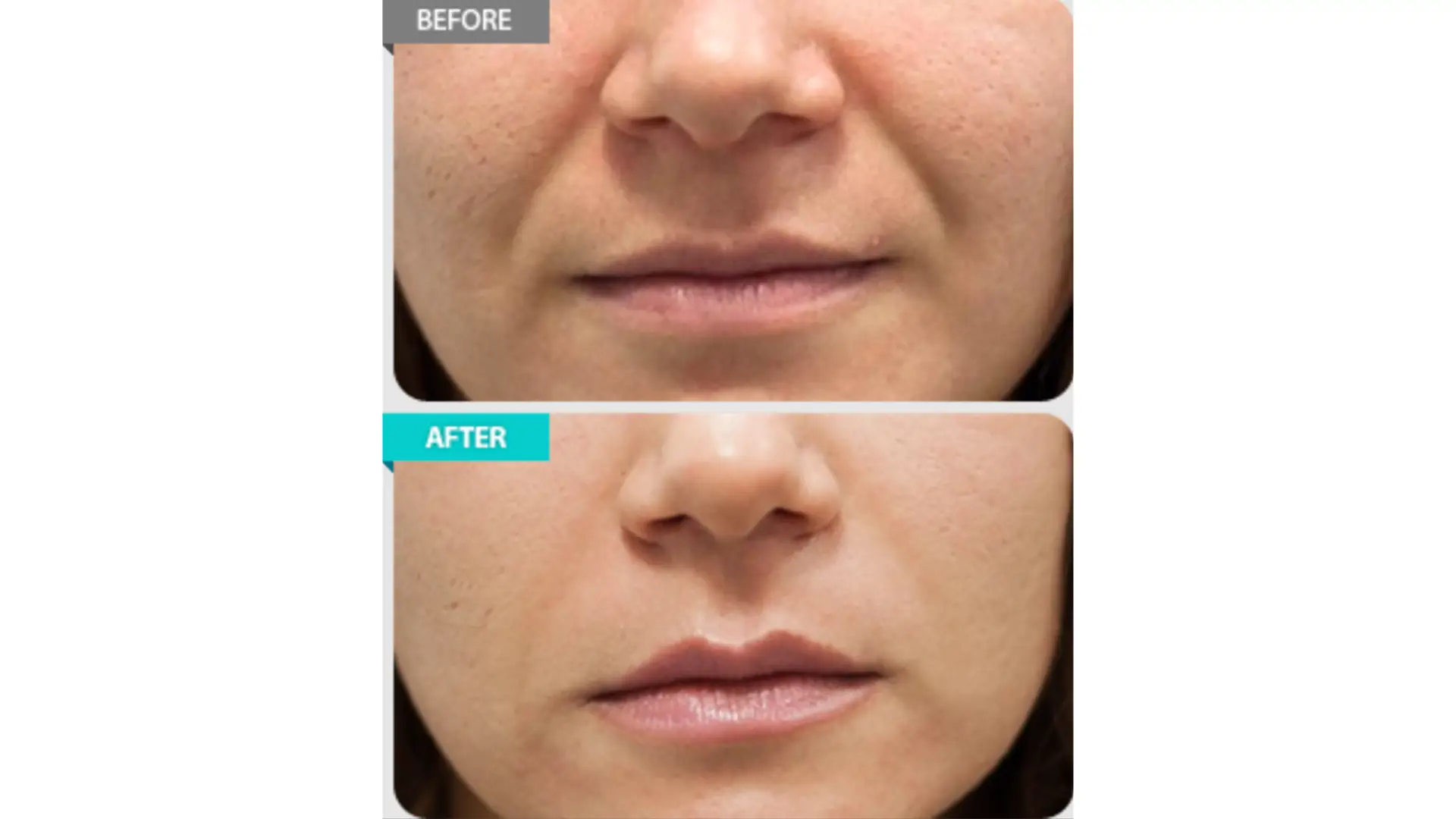
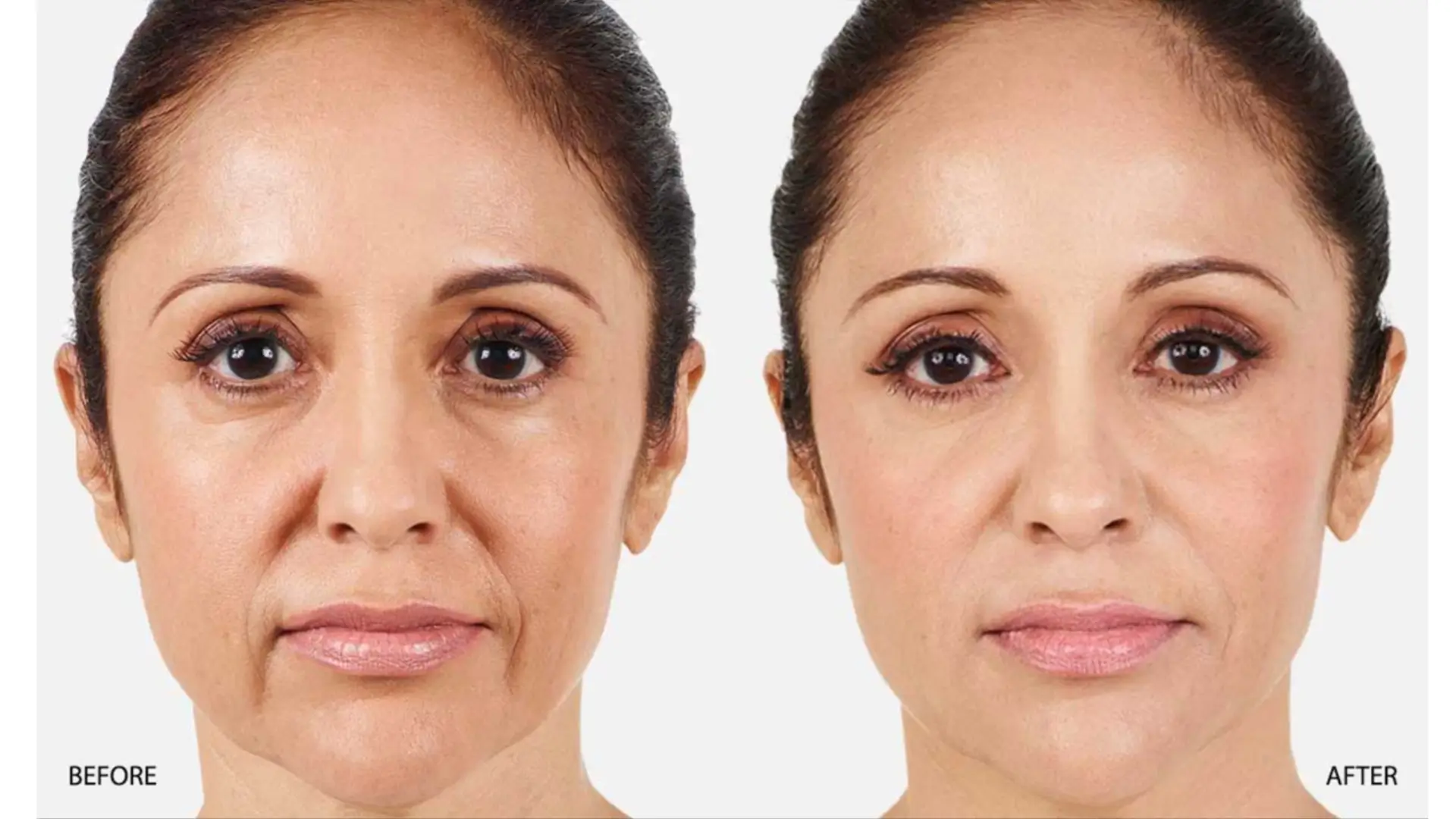
Selecting between Revofil vs Juvederm hinges on the patient’s unique needs and desired results. Revofil is best for those wanting long-lasting effects and improved skin elasticity. Juvederm is ideal for those seeking immediate enhancements and versatility in treating different facial areas.
However, patients should understand that consulting with a qualified practitioner can help identify the most suitable filler based on individual skin type, treatment goals, and medical history.
Conclusion
Revofil and Juvederm are both effective solutions for facial rejuvenation, each offering unique benefits through advanced formulations and technologies. Revofil’s biomimetic peptide technology provides versatile treatments for various skin concerns, with results lasting 9 to 12 months. This makes it an excellent choice for patients seeking smoother skin and enhanced volume.
Juvederm’s FDA approval and extensive product range cater to diverse aesthetic needs, delivering natural-looking results lasting from 6 to 18 months. Choosing between these fillers should be guided by individual goals, the specific treatment area, and professional recommendations to ensure safe and satisfying outcomes.
FAQs
1. What are the main differences between Revofil and Juvederm?
Revofil uses advanced biomimetic peptide technology and cross-linked hyaluronic acid, resulting in biphasic and monophasic characteristics. At the same time, Juvederm employs Vycross Technology, which cross-links HA molecules to create a smooth gel filler. These differences affect their formulations and applications.
2. How long do the effects of Revofil and Juvederm last?
Revofil treatments generally last between 9 to 12 months, while Juvederm’s results can last from 6 to 18 months, depending on the specific product used and individual patient factors.
3. What areas can be treated with Revofil and Juvederm fillers?
Revofil is suitable for addressing superficial wrinkles and deep lines and restoring volume in areas like the cheeks and chin. Juvederm offers a broader range of products for various concerns, including lip augmentation, facial wrinkles, and volumizing treatments for the cheeks and jawline.
References
- Maisel, A., Waldman, A., Furlan, K., Weil, A., Sacotte, K., Lazaroff, J. M., Lin, K., Aranzazu, D., Avram, M. M., Bell, A., Cartee, T. V., Cazzaniga, A., Chapas, A., Crispin, M. K., Croix, J. A., DiGiorgio, C. M., Dover, J. S., Goldberg, D. J., Goldman, M. P., Green, J. B., … Alam, M. (2018). Self-reported Patient Motivations for Seeking Cosmetic Procedures. JAMA dermatology, 154(10), 1167–1174. https://doi.org/10.1001/jamadermatol.2018.2357
- Dermal Fillers Reviews | Was it Worth It? | RealSelf. (2024, February 22). RealSelf.com. https://www.realself.com/reviews/dermal-fillers
